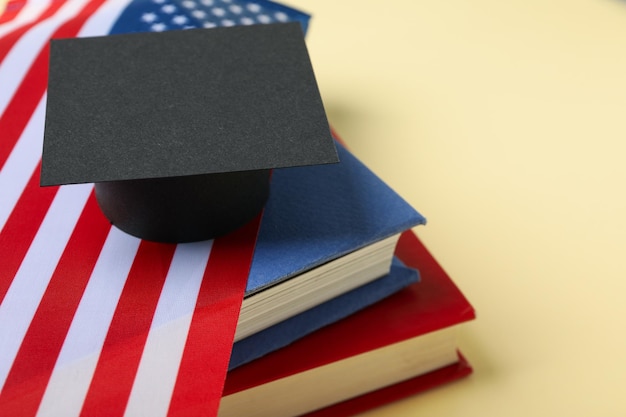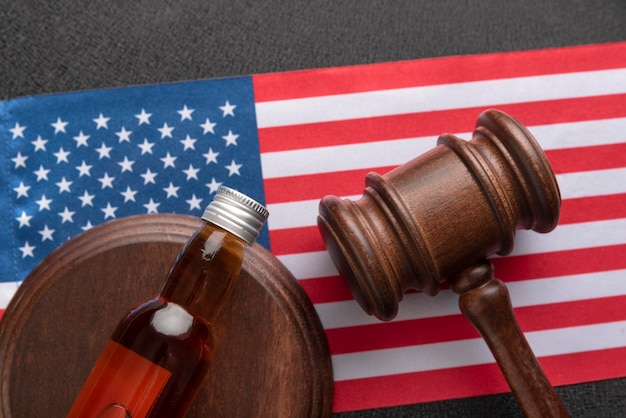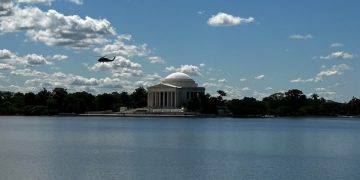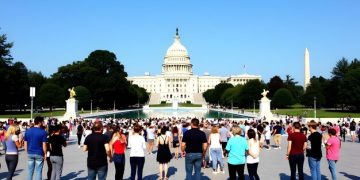Federal Student Loan Forgiveness 2025: What You Need to Know

The proposed federal student loan forgiveness plan for 2025 remains uncertain, navigating legal challenges and awaiting potential Supreme Court decisions, with ongoing discussions on alternative relief measures.
Navigating the complexities of student loans can feel like a never-ending task. With proposals for federal student loan forgiveness plan for 2025 circulating, keeping up with the latest developments is crucial for borrowers across the country. Let’s delve into what’s currently on the table and what it could mean for you.
Exploring the Biden Administration’s Initial Forgiveness Plan
The Biden administration initially proposed a comprehensive student loan forgiveness plan aimed at providing relief to millions of borrowers. This plan included forgiving up to $20,000 in student loan debt for Pell Grant recipients and up to $10,000 for other borrowers, provided they met certain income requirements. However, this initiative faced significant legal challenges.
These legal challenges primarily revolved around the authority of the executive branch to implement such a large-scale forgiveness program without explicit congressional approval. Several states and conservative groups argued that the plan exceeded the administration’s powers and would unduly burden taxpayers. The legal battles ultimately led to the plan being reviewed by the Supreme Court.
Supreme Court Decision and Its Implications
The Supreme Court ultimately struck down the Biden administration’s initial student loan forgiveness plan. The court’s decision was based on the argument that the administration had overstepped its authority in implementing the plan without congressional authorization. This ruling was a major setback for the administration’s efforts to provide broad student loan relief.
Following the Supreme Court’s decision, the administration acknowledged the importance of finding an alternative pathway to deliver student loan forgiveness. Efforts were then directed toward exploring other legal avenues and developing a new, more targeted approach to address student debt. This set the stage for the development of the SAVE plan.
In conclusion, the Biden Administration planned to offer student loan forgiveness of up to $20,000 to Pell Grant recipients and $10,000 to other borrowers, but this was struck down by the Supreme Court in 2023. The court ruled that the administration lacked the authority to enact such broad forgiveness without explicit Congressional approval.

Understanding the SAVE Plan: A New Approach
In response to the Supreme Court’s decision, the Biden administration introduced the Saving on A Valuable Education (SAVE) plan. The SAVE plan is an income-driven repayment (IDR) plan designed to make student loan payments more affordable for borrowers. It aims to reduce monthly payments, limit interest accrual, and provide a pathway to forgiveness for eligible borrowers.
Unlike the initial, broader forgiveness plan, the SAVE plan operates within the existing framework of income-driven repayment programs. It modifies certain aspects of these programs to make them more beneficial for borrowers, such as increasing the income exemption and reducing the discretionary income calculation. This approach is intended to withstand legal challenges by working within established statutory guidelines.
Key Features of the SAVE Plan
The SAVE plan includes several key features that distinguish it from other income-driven repayment plans. One of the primary benefits is that it lowers monthly payments by increasing the amount of income protected from repayment. Borrowers with undergraduate loans will have their payments capped at 5% of their discretionary income, and those with only graduate loans will pay 10% of their income.
Another significant feature is that it prevents balances from growing due to unpaid interest. Under the SAVE plan, if a borrower makes their required monthly payment, any remaining interest will be waived. This provision ensures that borrowers do not see their loan balances increase even if their payments are not enough to cover the full interest charges.
- Lower monthly payments based on income and family size
- Protection from accruing unpaid interest
- Faster loan forgiveness for lower-balance borrowers
- Eligibility for borrowers with various loan types
The SAVE Plan aims to alleviate the burden of student loan debt by reducing monthly payments, preventing interest accrual, and offering a quicker path to forgiveness for borrowers with lower balances. It builds on older income-driven repayment plans like REPAYE, offering even more favorable terms. This approach is intended to be more legally sound than the previous widespread forgiveness plan.
Eligibility and Application Process for the SAVE Plan
To be eligible for the SAVE plan, borrowers must have federal student loans that are eligible for income-driven repayment. This typically includes Direct Loans, including subsidized and unsubsidized loans, as well as PLUS loans made to students. Parent PLUS loans and private student loans are generally not eligible for the SAVE plan.
The application process for the SAVE plan is relatively straightforward. Borrowers can apply online through the Department of Education’s website or by submitting a paper application. The application requires borrowers to provide information about their income, family size, and loan details. This information is used to calculate the borrower’s monthly payment under the SAVE plan. To apply, you’ll need your FSA ID to log in. During the application, you’ll provide information about your income and family size to determine the monthly payment amount.
Steps to Apply for the SAVE Plan
The first step is to gather all necessary documentation, including your Social Security number, loan account numbers, and income information (such as tax returns or pay stubs). Once you have these materials, visit the Department of Education’s website and navigate to the income-driven repayment plan application. If you prefer a paper application, you can download it from the Department of Education’s website and mail it in.
During the application, you will need to provide consent for the Department of Education to access your tax information from the IRS. This allows the department to verify your income and adjust your monthly payments accordingly. After submitting your application, it may take several weeks for it to be processed. Once approved, you will receive a notification outlining your new monthly payment amount and other details of the SAVE plan.
- Gather necessary documents (Social Security number, loan details, income proof).
- Apply online via the Department of Education’s website.
- Provide consent for the IRS to share your tax information.
- Await processing and approval notification.
Overall, the eligibility requirements for the SAVE plan are relatively broad, covering numerous federal student loan borrowers. The application process is designed to be user-friendly, allowing borrowers to apply online and provide the necessary information for calculating their monthly payments. Once approved, borrowers can benefit from lower payments and interest protection.
Potential Challenges and Criticisms of the SAVE Plan
While the SAVE plan is intended to provide significant relief to student loan borrowers, it is not without its potential challenges and criticisms. One of the main concerns is the long-term cost of the program to taxpayers. By reducing monthly payments and forgiving loan balances, the SAVE plan could potentially increase the overall cost of the federal student loan program.
Another criticism is that the SAVE plan could incentivize borrowers to take on more student loan debt than they can realistically repay. By offering a more generous repayment plan with the possibility of forgiveness, some borrowers may be tempted to borrow more money for their education than they otherwise would. This could lead to higher levels of student loan debt overall.
Impact on Loan Servicers
The SAVE plan could also pose challenges for loan servicers, who are responsible for administering the program. Servicers may need to invest in new technology and training to effectively implement the SAVE plan and ensure that borrowers receive accurate information and support. This could increase the administrative costs of the student loan program.
There is also concern among some critics that the SAVE plan may not be sustainable in the long term. If economic conditions change or if the program proves to be more costly than anticipated, there is a risk that future administrations could modify or eliminate the SAVE plan. This uncertainty could make it difficult for borrowers to plan their finances and make informed decisions about their education and careers.

Despite the criticisms, the SAVE plan offers significant potential benefits for student loan borrowers. It provides a more affordable repayment option, protects borrowers from runaway interest, and offers a path to loan forgiveness. It addresses the need to balance taxpayer costs with the importance of supporting educational attainment.
Future Outlook for Federal Student Loan Forgiveness
Looking ahead, the future of federal student loan forgiveness remains uncertain. While the SAVE plan provides a pathway to forgiveness for eligible borrowers, it is not a comprehensive solution for all student loan debt. The long-term effects of the SAVE plan on the student loan program and the broader economy are yet to be fully understood.
It is possible that future administrations could pursue additional student loan forgiveness initiatives, either through executive action or through legislation. However, these efforts are likely to face legal and political challenges, as demonstrated by the fate of the Biden administration’s initial forgiveness plan. The debate over student loan forgiveness is likely to continue for the foreseeable future.
Potential Legislative Actions
Congress could potentially pass legislation to authorize broader student loan forgiveness or to reform the student loan system more comprehensively. However, given the current political climate, it is unclear whether such legislation would be able to garner enough support to pass both houses of Congress and be signed into law. Any legislative action would likely involve extensive negotiations and compromises.
In the absence of legislative action, the executive branch may continue to explore alternative approaches to student loan forgiveness, such as modifying existing repayment plans or targeting relief to specific groups of borrowers. However, these efforts are likely to be subject to legal challenges and may not provide the same level of relief as a broader forgiveness program.
- Ongoing legal and political debates on loan forgiveness.
- Potential for future legislative action to reform the student loan system.
- Continued efforts by the executive branch to find alternative relief measures.
- Economic factors influencing the feasibility of long-term solutions.
In conclusion, the future of federal student loan forgiveness is subject to numerous factors, including legal challenges, political considerations, and economic conditions. While the SAVE plan offers a path to forgiveness for some borrowers, it is not a panacea for the student loan crisis. The need for comprehensive reform of the student loan system remains a pressing issue.
Strategies for Borrowers Amidst Uncertainty
Given the ongoing uncertainty surrounding federal student loan forgiveness, it is crucial for borrowers to take proactive steps to manage their student loan debt. One of the most important strategies is to understand your repayment options and choose the plan that best fits your financial situation. This may involve enrolling in an income-driven repayment plan, such as the SAVE plan, or exploring other options like consolidation or refinancing.
Another important strategy is to communicate with your loan servicer and stay informed about any changes to student loan policies or programs. Loan servicers can provide valuable information and support to help you navigate the complexities of student loan repayment. Staying informed will allow you to adapt your strategy based on new information.
Budgeting and Financial Planning
Creating a budget and developing a financial plan can help you manage your student loan debt more effectively. This may involve tracking your income and expenses, setting financial goals, and prioritizing debt repayment. By taking control of your finances, you can reduce the stress and anxiety associated with student loan debt.
Consider consulting with a financial advisor or counselor who can provide personalized guidance and support. A financial advisor can help you assess your financial situation, develop a repayment strategy, and make informed decisions about your student loans. Seeking professional advice can provide peace of mind and help you achieve your financial goals.
In light of the uncertainty, borrowers should focus on the aspects of their student loans that they can control—understanding repayment options, creating a budget, and seeking professional advice. This proactive approach can help mitigate the stress associated with potential policy changes.
| Key Point | Brief Description |
|---|---|
| ⚖️ Supreme Court Ruling | The Supreme Court struck down Biden’s initial forgiveness plan. |
| 💰 The SAVE Plan | New income-driven repayment plan with more favorable terms. |
| 📝 Eligibility | Includes Direct Loans; excludes Parent PLUS loans and private loans. |
| 📊 Planning Ahead | Understand repayment options, budget wisely, and stay informed. |
Frequently Asked Questions
▼
The Biden administration’s initial plan proposed forgiving up to $20,000 for Pell Grant recipients and $10,000 for other eligible borrowers based on income thresholds prior to the Supreme Courts ruling.
▼
The Supreme Court ruled that the administration exceeded its authority by implementing such a broad forgiveness program without explicit Congressional approval.
▼
The SAVE (Saving on A Valuable Education) plan is an income-driven repayment plan designed to lower monthly payments and prevent balances from growing due to unpaid interest.
▼
Borrowers with federal student loans, including Direct Loans (subsidized and unsubsidized) and PLUS loans made to students, are typically eligible, while Parent PLUS loans usually are not.
▼
Borrowers should understand their repayment options, consider applying for the SAVE plan, create a budget, and stay informed about any policy changes from their loan servicer or the Department of Education.
Conclusion
In conclusion, the landscape of federal student loan forgiveness plan for 2025 remains dynamic, with legal challenges shaping current strategies. The SAVE plan offers a viable path for many borrowers, but proactive financial planning and staying informed are crucial in navigating this complex environment.





